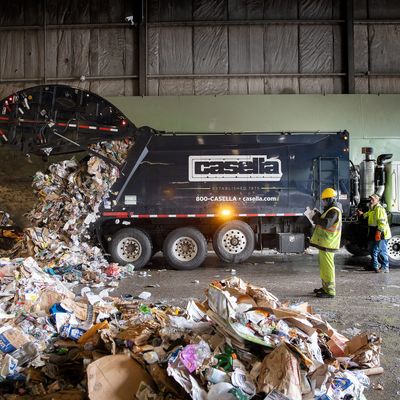
Since China stopped importing waste products like plastic, textiles, and paper at the beginning of 2018, recycling in the United States has been, in many places, a feel-good exercise for consumers, rather than a functional process to reduce the absurd tonnage of recyclable waste going into landfills each year.
But a law signed by Maine governor Janet Mills earlier this month could help reform recycling in the States by shifting the responsibility from consumers to the manufacturer, as the New York Times reports:
Essentially, these programs work by charging producers a fee based on a number of factors, including the tonnage of packaging they put on the market. Those fees are typically paid into a producer responsibility organization, a nonprofit group contracted and audited by the state. It reimburses municipal governments for their recycling operations with the fees collected from producers.
Nearly all European Union member states, as well as Japan, South Korea and five Canadian provinces, have laws like these and they have seen their recycling rates soar and their collection programs remain resilient … Ireland’s recycling rate for plastics and paper products, for instance, rose from 19 percent in 2000 to 65 percent in 2017. Nearly every E.U. country with such programs has a recycling rate between 60 and 80 percent, according to an analysis by the Product Stewardship Institute. In 2018, the most recent year for which data is available, America’s recycling rate was 32 percent, a decline from a few years earlier.
Plastic, paper, and other packaging products covered by the new law include as much as 40 percent of Maine’s waste stream, which will be run by a statewide program; prior to the reform, recycling was organized by local authorities. Producers will also be required to cover 100 percent of recycling costs and will be provided with incentives to reduce the amount of recycling material through design fixes. They will also be charged more for packaging that is difficult to recycle or contains toxic materials.
Sarah Nichols, the director of sustainability at the Natural Resources Council of Maine, told the Times that the law is “transformative” and will be “the difference between having a recycling program or not.” It could also set the tone for close to a dozen states pursuing similar policies. Oregon governor Kate Brown is also expected to sign a similar bill later this summer, with producers putting up over a quarter of recycling costs.
With over 26.2 million tons of plastic and 18 million tons of paper winding up in U.S. landfills every year, shifting the burden to producers — after decades of plastics-industry advertising putting the impetus on individual consumers — will help curb the demand for plastics as their pollution and oil consumption continue to grow. By 2050, the plastics industry is forecasted to consume around 20 percent of all oil produced.






























